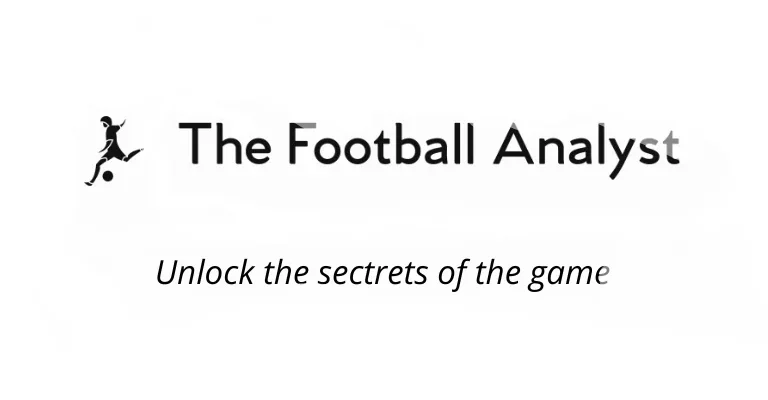In football, the intricate dance between strategy and execution unfolds on the pitch, and managers play a pivotal role in orchestrating this ballet. One such maestro navigating the tactical realms is Mikel Arteta, the head honcho at Arsenal. This article delves into a comprehensive tactical analysis, dissecting the nuances of Arteta’s managerial prowess. From the Gunners’ build-up play to defensive solidity, we unravel the strategic layers that define Arteta’s approach. Join us as we explore the tactical symphony that unfolds under the guidance of Mikel Arteta at Arsenal.
Build-up
Low Build-up
Arteta sets his team up in a 1-4-2-4 formation in the low build-up. The two strikers start high, creating a massive space between the opposition midfield and backline to drop into.
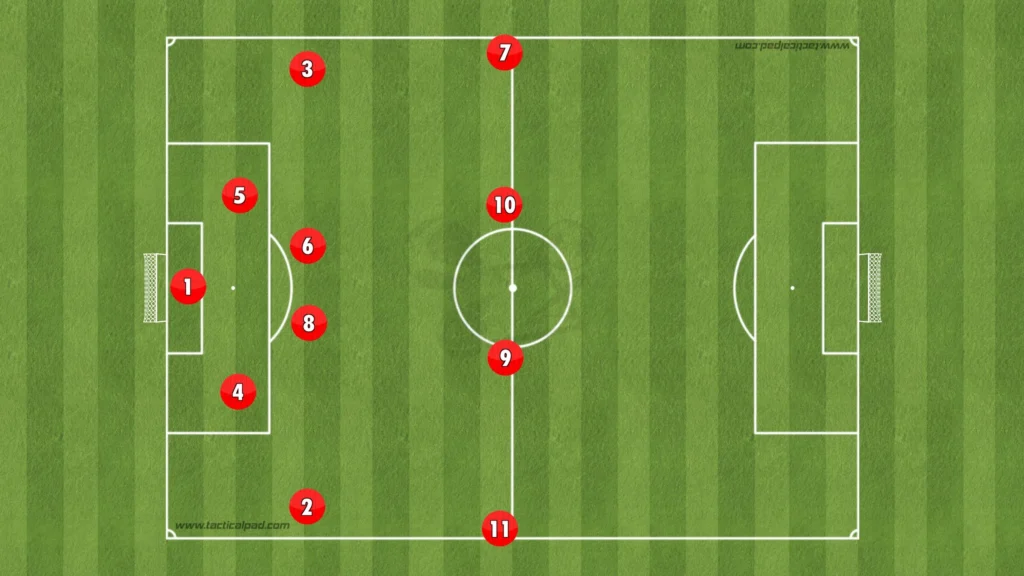
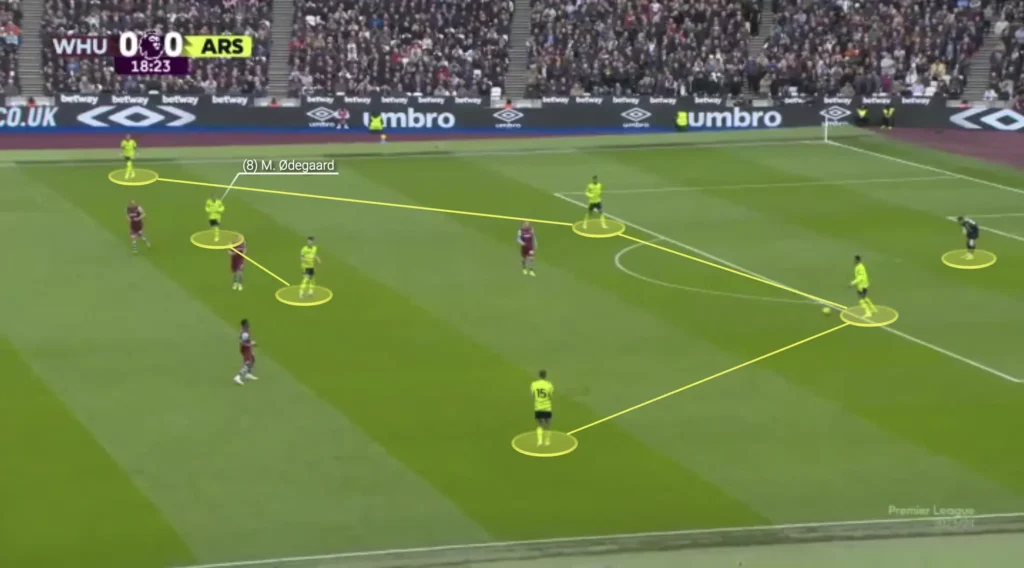
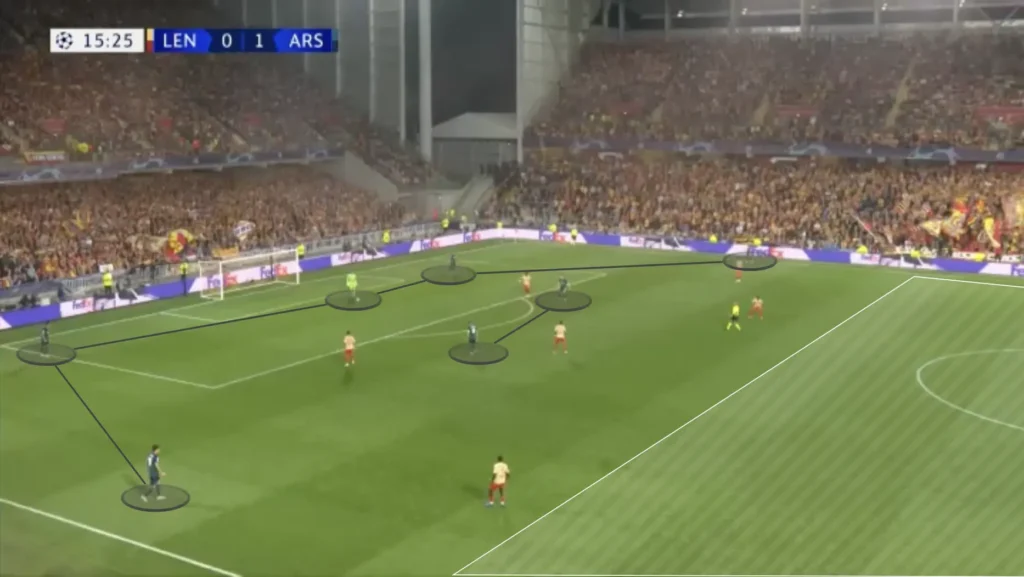
This formation, popularized by Roberto De Zerbi, questions the opposition center-backs, forcing them to make difficult decisions. If they push up on the dropping strikers, the space behind them opens up, giving the winger a 1v1 against the fullback. However, If they do not push up the strikers, a numerical superiority gets created in the midfield, allowing Arsenal to play through the press.
Inverted Fullback
An Arsenal fullback, mainly Zinchenko, often inverts during the build-up, giving Arsenal an extra midfielder. This creates more options in the center and less space between the players. Arteta likes this because he prioritizes playing through the middle. He needs one player high and wide to pull apart the backline while the rest create numerical advantages in the midfield areas. This builds good conditions in defensive transitions, allowing more players to press when they lose the ball. Another purpose for keeping many players in the center is that it shortens the distance between the players. This shortens the length of the passes, which naturally shortens the time between passes. This means the opposition players will have less time to push up and press, giving the Arsenal players more time and control.
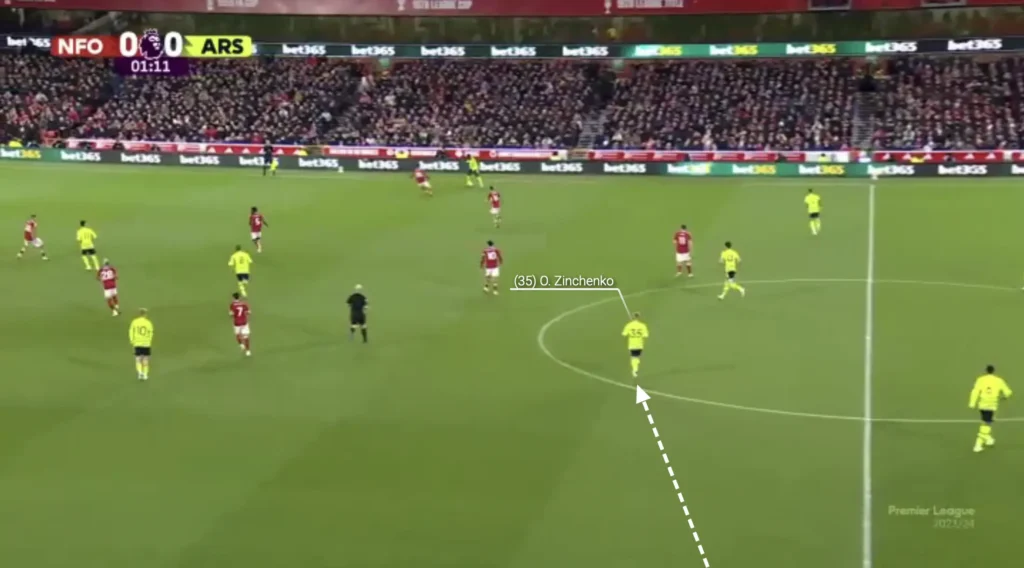
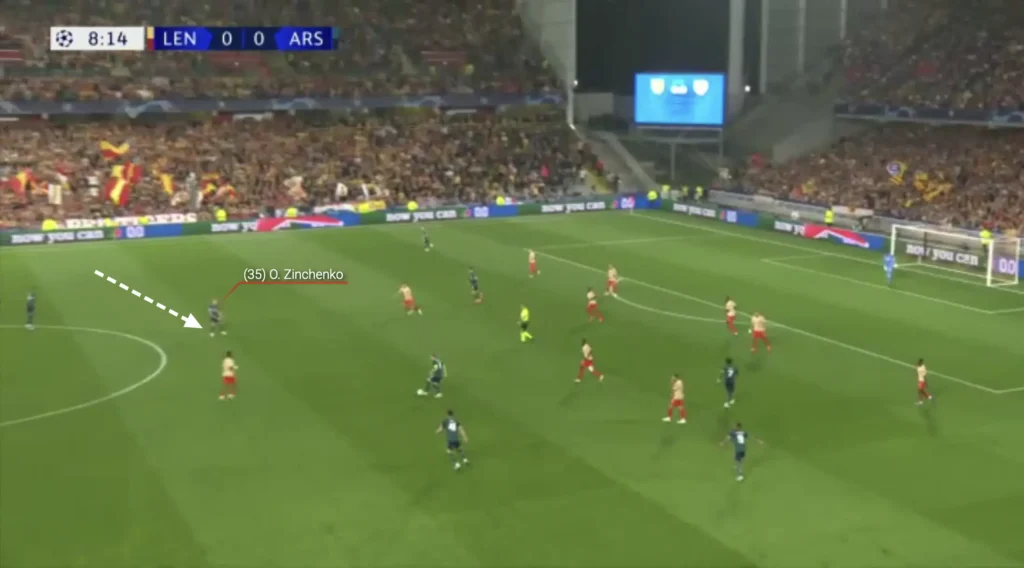
High Build-up
In the high build-up, Arteta’s Arsenal sets up in a 1-3-2-2-3 formation, with four players in box midfield working together to create a numerical superiority in the midfield:
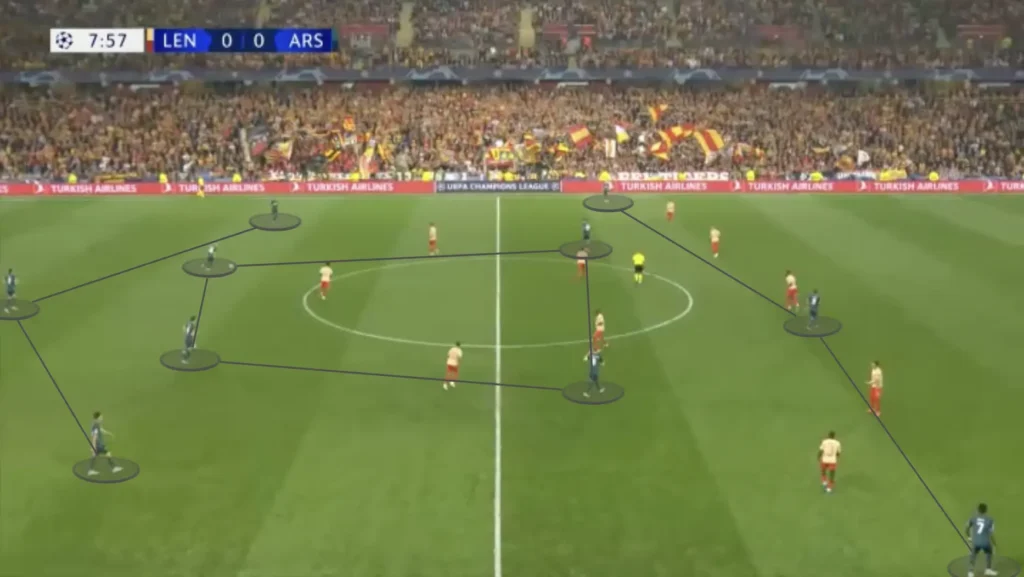
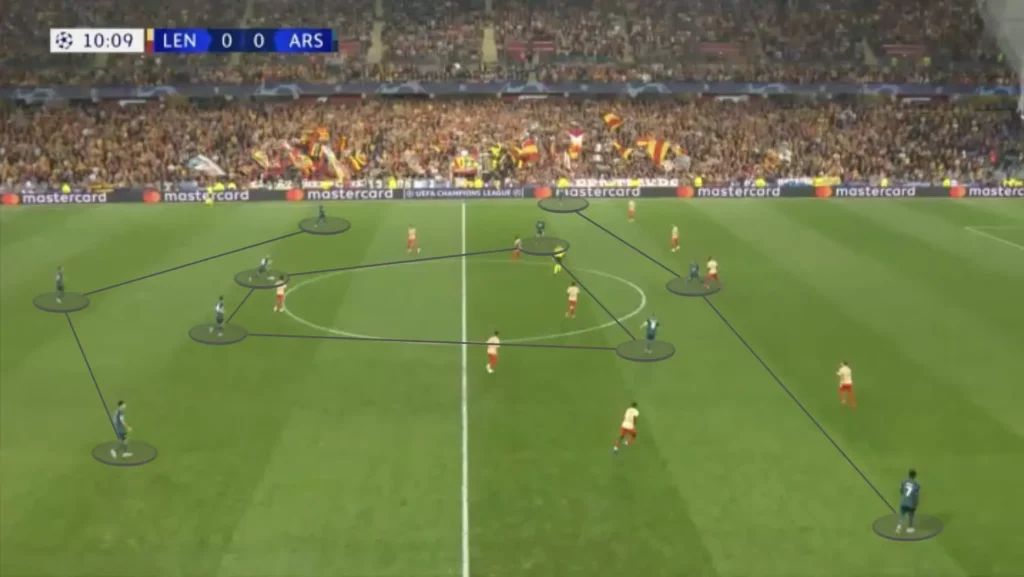
The inverted fullback usually plays as one of the two holding midfielders in this phase of the game.
A massive aspect of Arsenal’s high possession build-up is they keep a high backline. This helps in the counterpress because they get closer to the center. Having more players close to the center who can win the ball back makes it difficult for the opposition to recycle possession. Furthermore, the high backline shortens the distance between players, shortening the time and length of the passes and preventing the opposition from pushing up their defense.
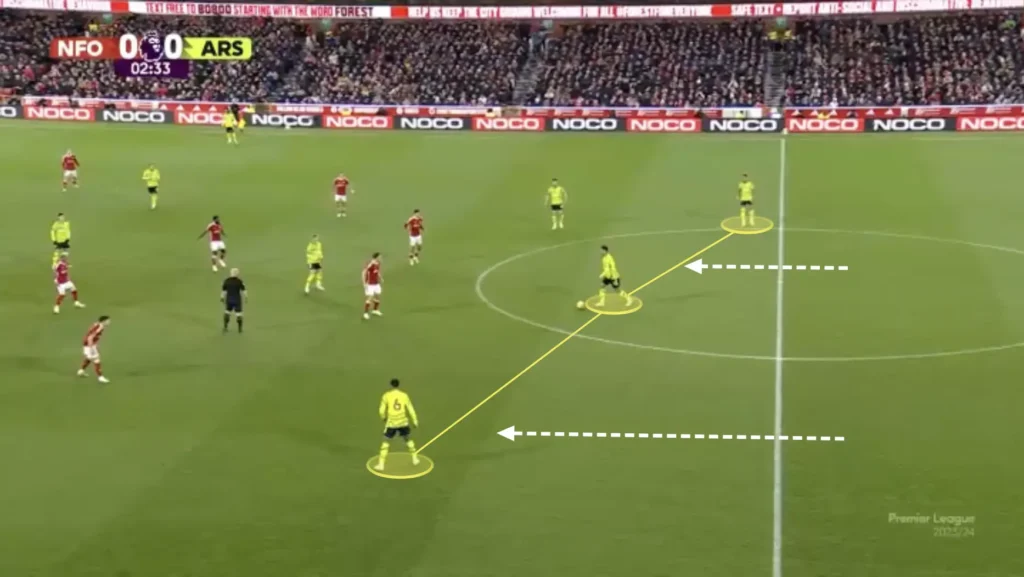
Arsenal often rotate in their build-up, creating new formations to confuse opponents. They also adapt to their opponent’s formation to create numerical advantages in different areas, allowing them to beat the defense and score more goals. Their most frequent rotation is to push one of the center-backs into the midfield, creating a 1-2-3-2-3 formation. Their principles and general guidelines stay the same when they do this.
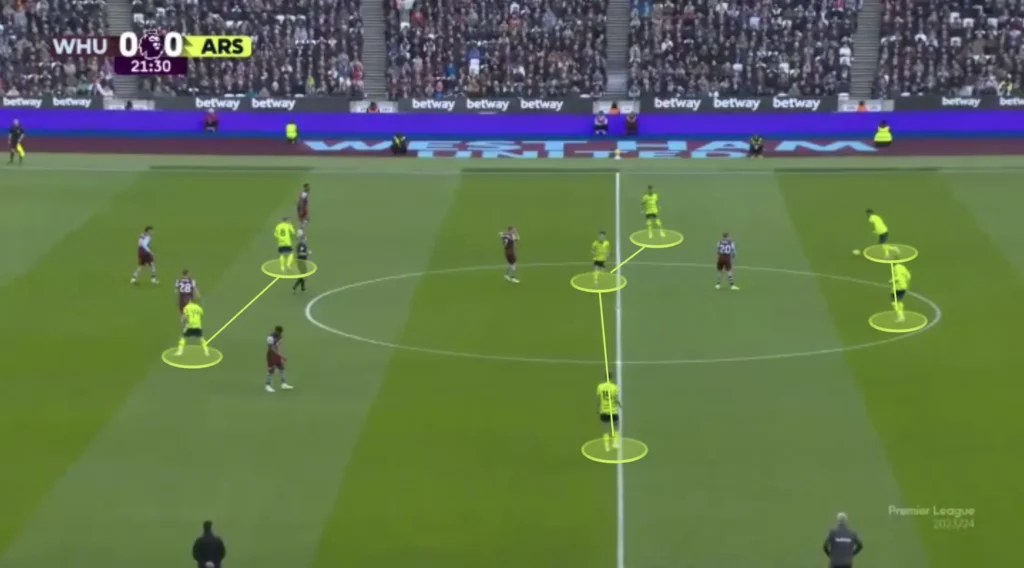
Finding the Pockets
Arsenal always try to find the attacking midfielders Havertz and Odegaard in the pockets. Arsenal’s midfield numerical superiority usually means that at least one will be open. They will look for passes from the back, breaking lines and finding Odegaard or Havertz, who will turn and drive at the defense.
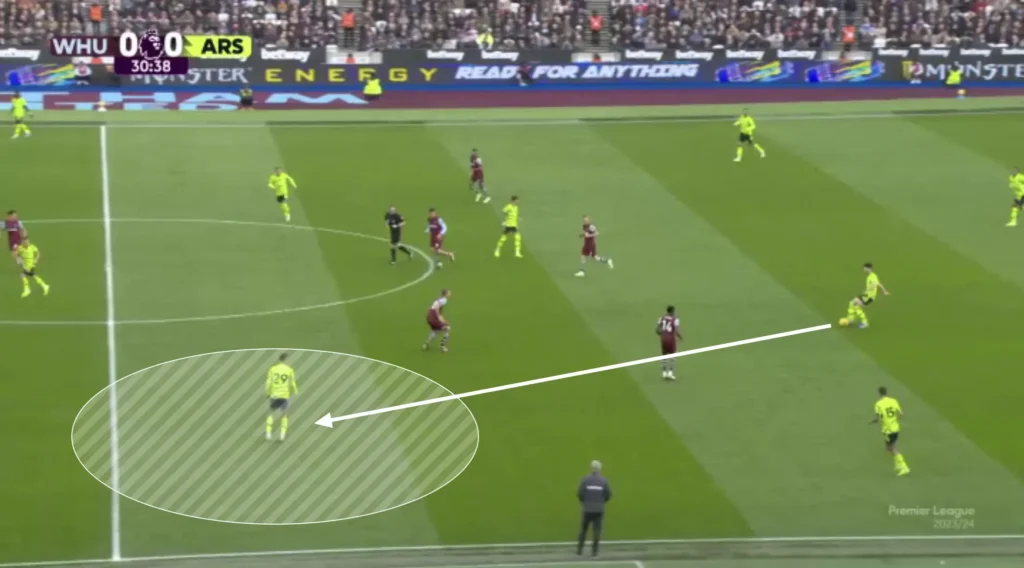
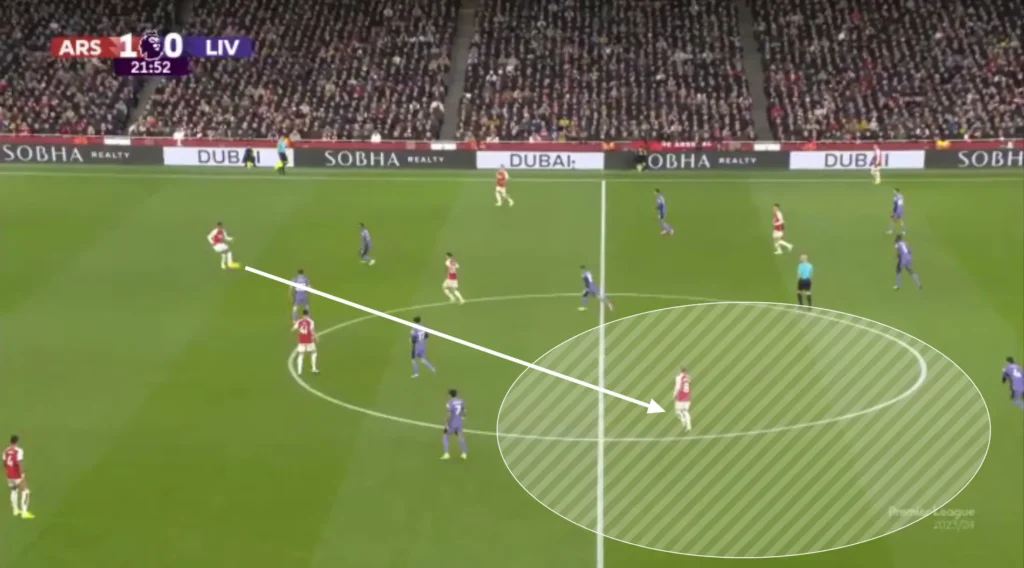
Third-man
Mikel Arteta likes it when his team plays through the opposition when possible. One vital tool that they often use is the third-man principle. This means using a third player to reach a free player whose passing lane is blocked.
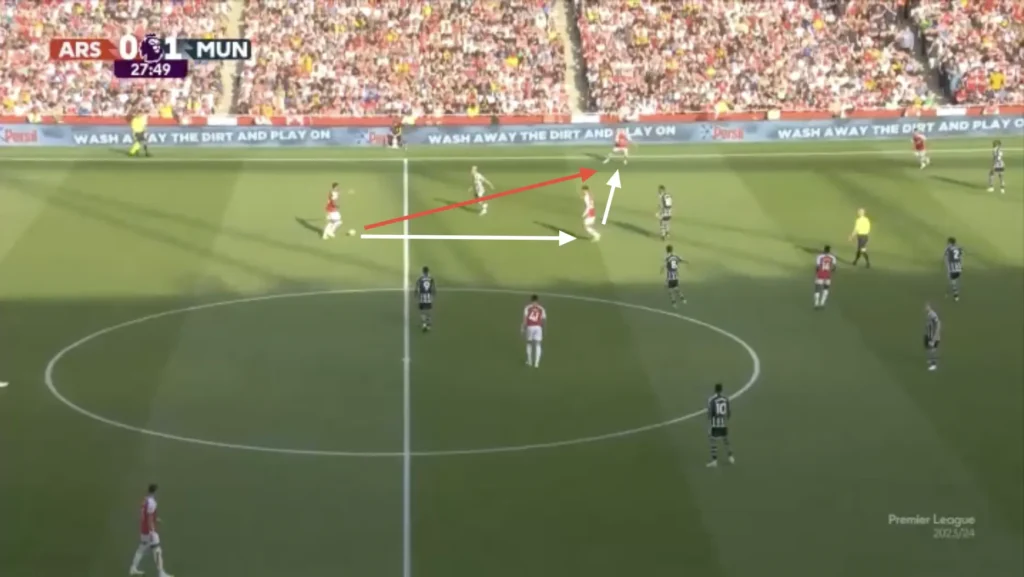
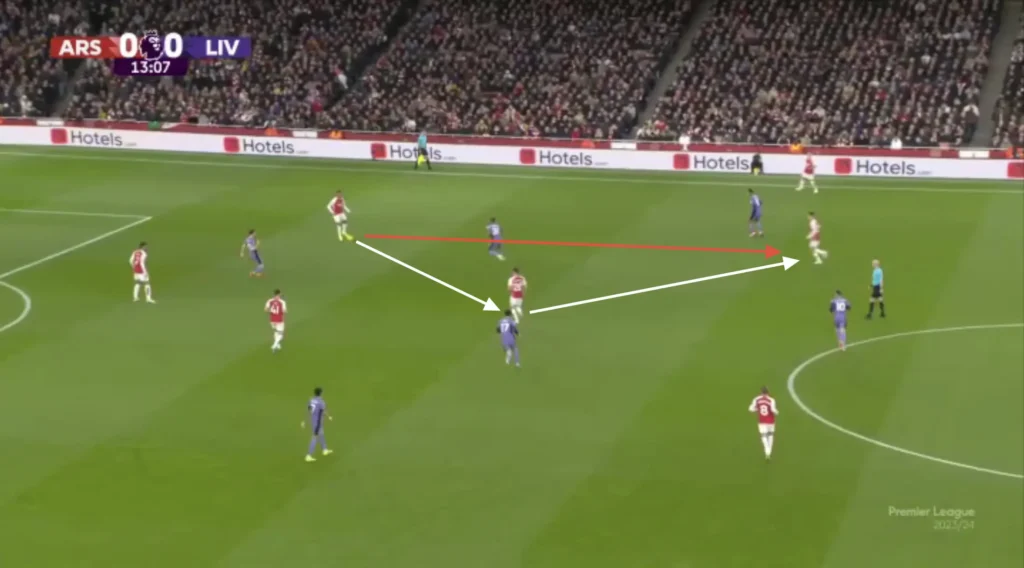
Attacking the Half-Space
Arsenal is an excellent team in the final third. They always create many chances, mainly by attacking the space between the opposition center-back and fullback.
They usually do this from the wide areas with underlaps from midfielders:

Overlaps
Arsenal also use the overlap to produce opportunities in the final third. When the winger gets the ball, the ball-side fullback quickly makes the overlap, creating a 2v1 on the wing. If the opposition fullback drops to cover the overlapping run, the winger could cut inside, taking a shot or combining with a midfielder. If the fullback covers the center, the ball can easily be played to the fullback, creating a crossing opportunity.
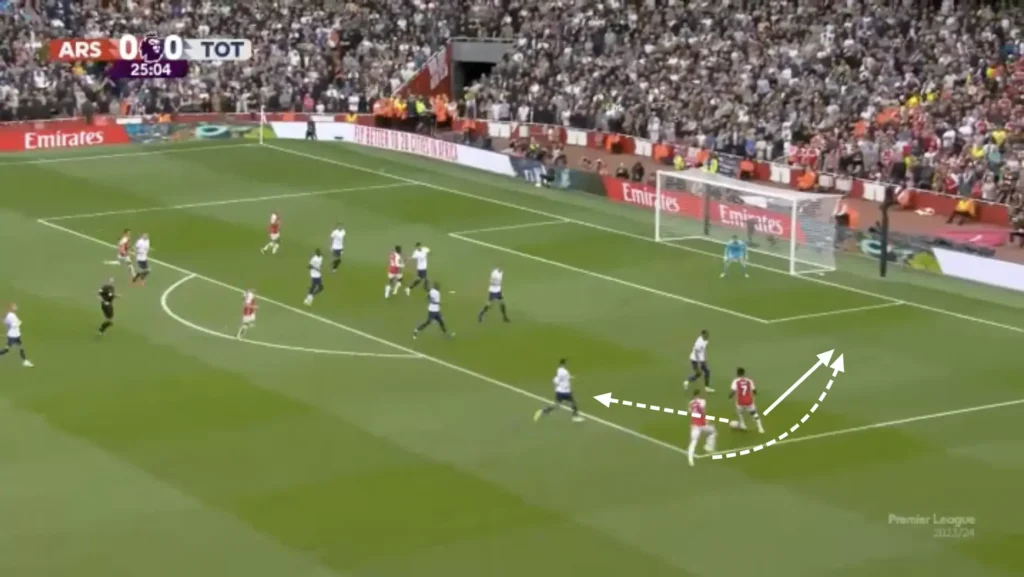
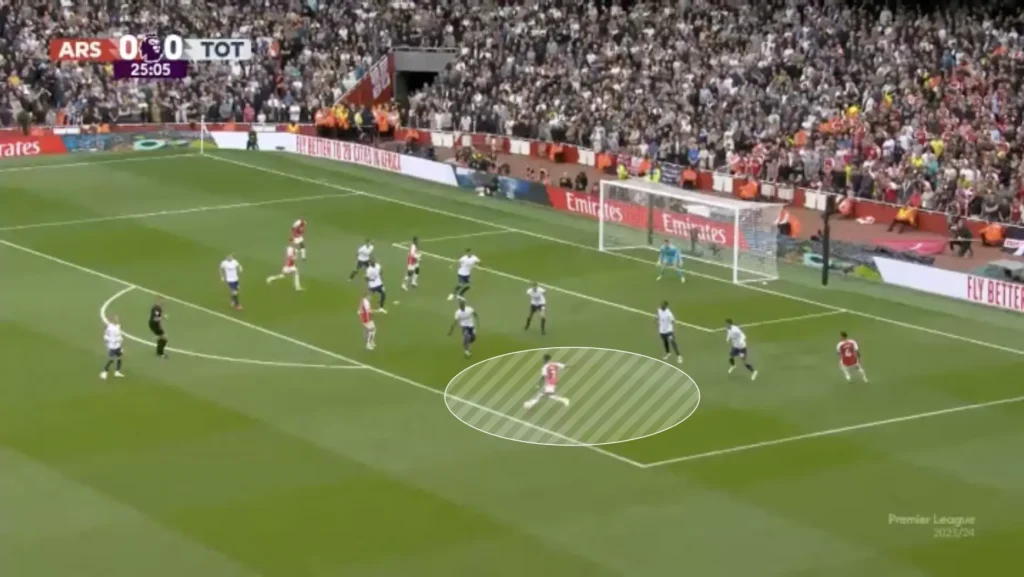
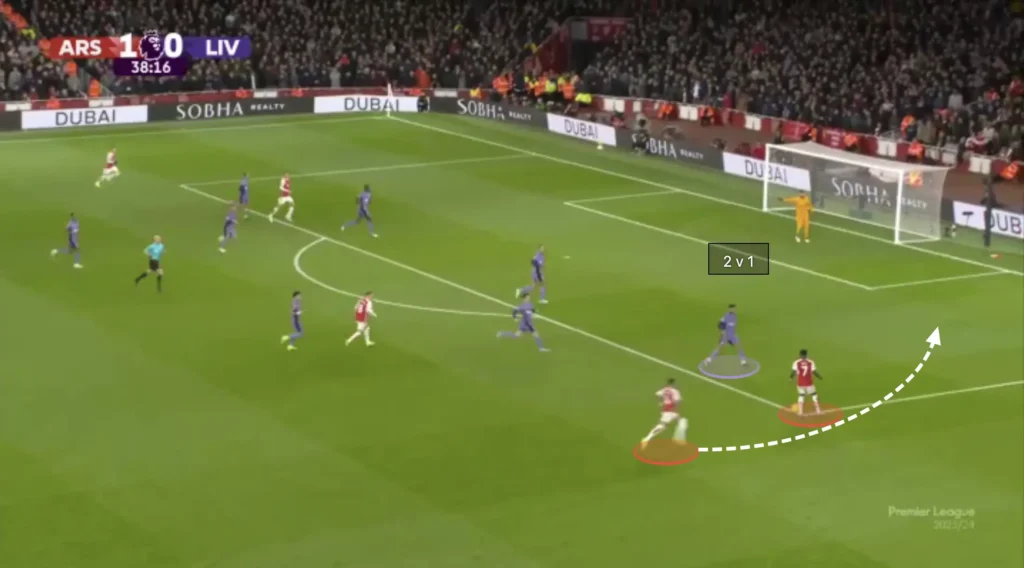
Winger Movement
Mikel Arteta has developed a movement with the winger and the fullback where the winger inverts before receiving the ball. This often catches the opposition fullback off guard, allowing the winger to receive the ball inside with time and space.
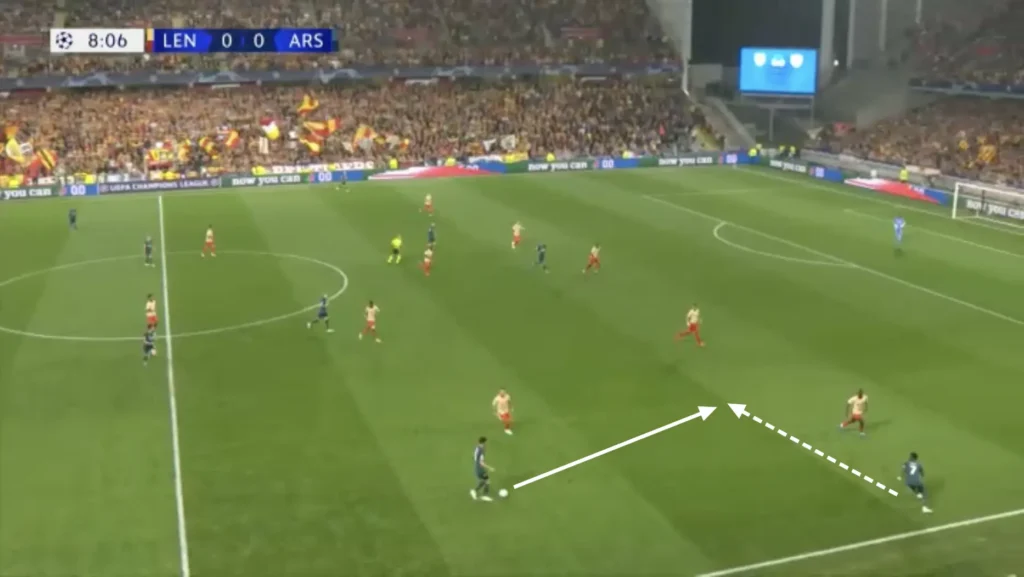
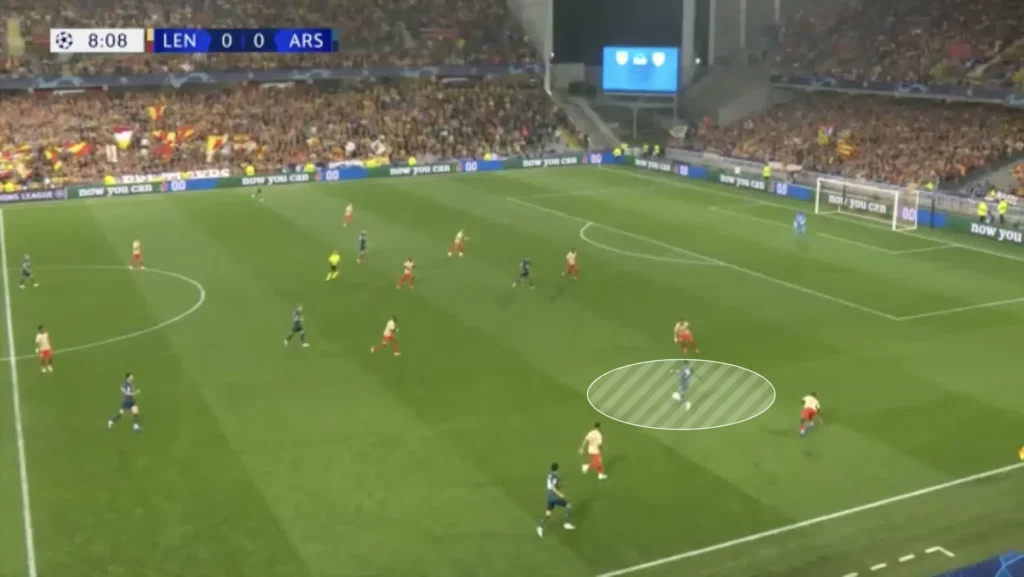
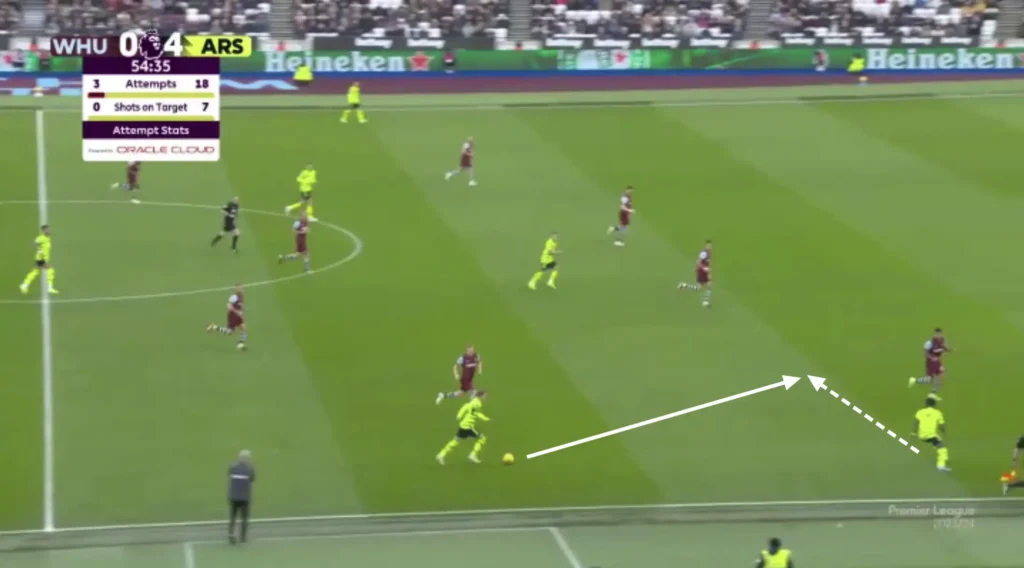
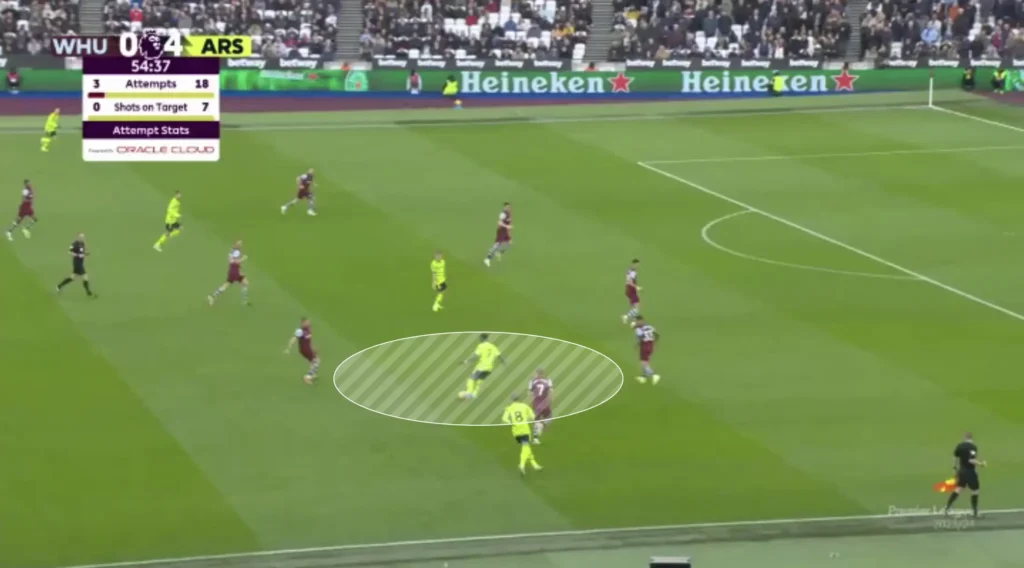
Movements like these show that the Arsenal players always are synced and know what their teammates will do. This synergy has been crucial in Arsenal’s recent success.
Many Players in the Box
The attacking midfielders also look to make runs into the box when the ball is in the final third, often getting four or five players into these areas to create overloads. The numerical advantages in the box force the defending team to make decisions and leave some players open. The open player can receive a cross or a pass and get a great goalscoring opportunity.
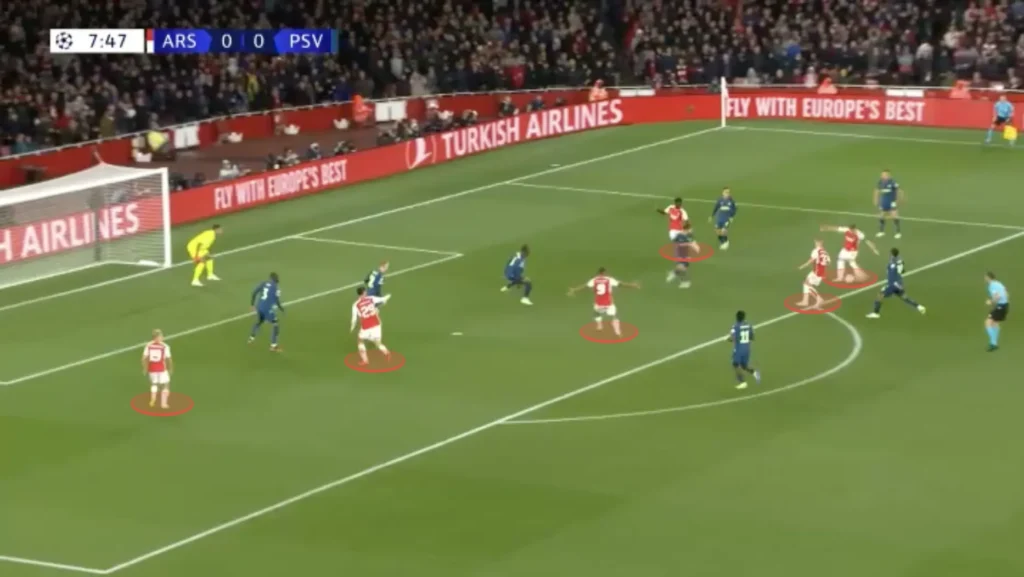
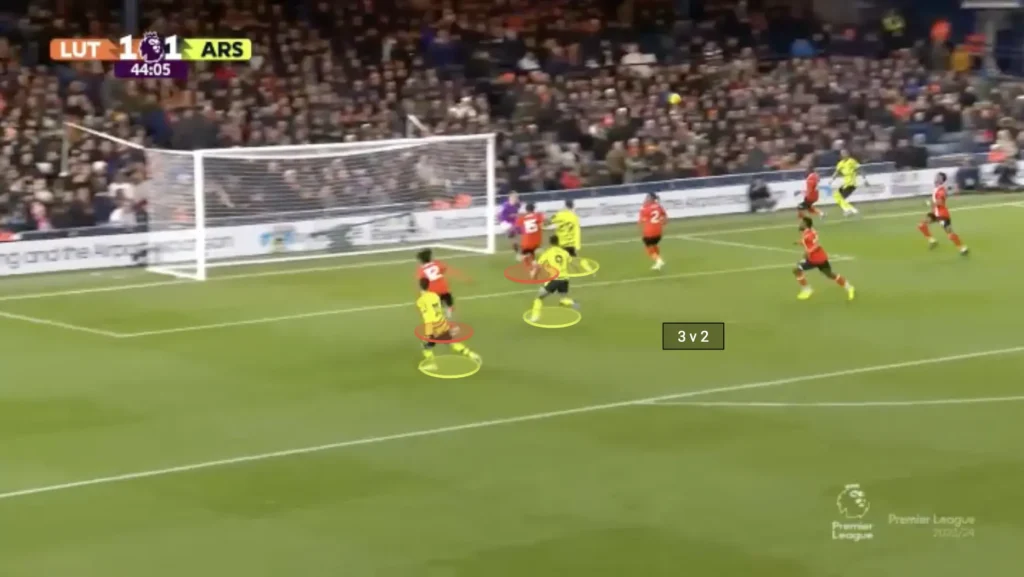
Corners
Arsenal score many goals from corners. They have many different routines, always changing over time to prevent being too predictable. One interesting tactical setup they have used a lot this season is they start with the strong heading players at the back post and then run at the front post. The ball will be crossed to the front post, where the Arsenal players often would be first and score.
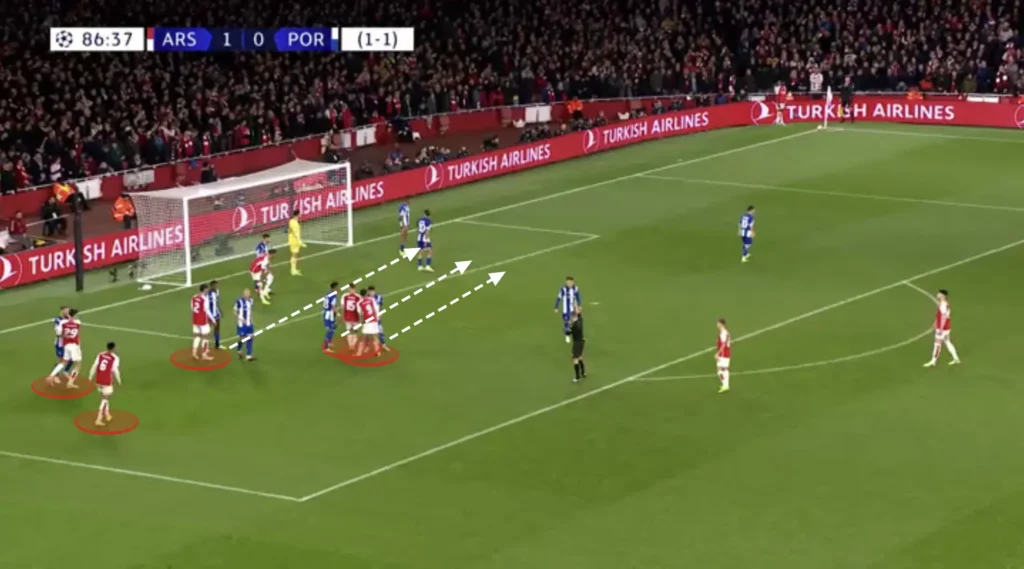
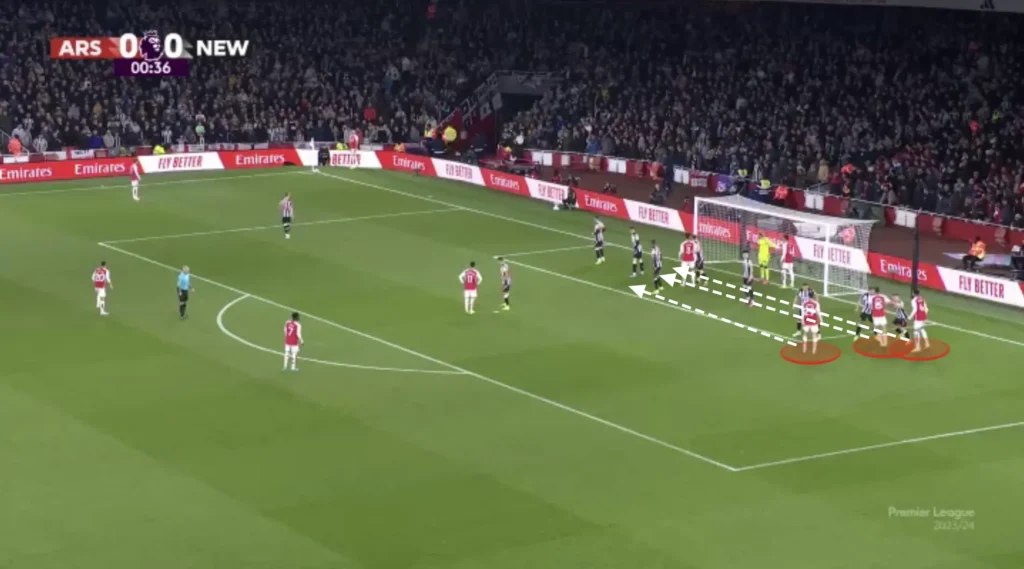
This setup makes it very difficult for the defenders. If the attacker is in front of the defender, the defender can look in one direction and see both the ball and the attacker. When the attacker is behind the defender, the defender has to look both at the ball in front of him and at the attacker behind him(180°). This makes it difficult to receive all the information, leading to the defender noticing the attacker’s run much later.
Defending
High Press
Arteta’s Arsenal always looks to be aggressive without the ball. This shows in their high pressure. Arteta usually wants his team to go man-to-man and intensely press the opposition. Arsenal will often win the ball high up the pitch and get many goals thanks to their high press.
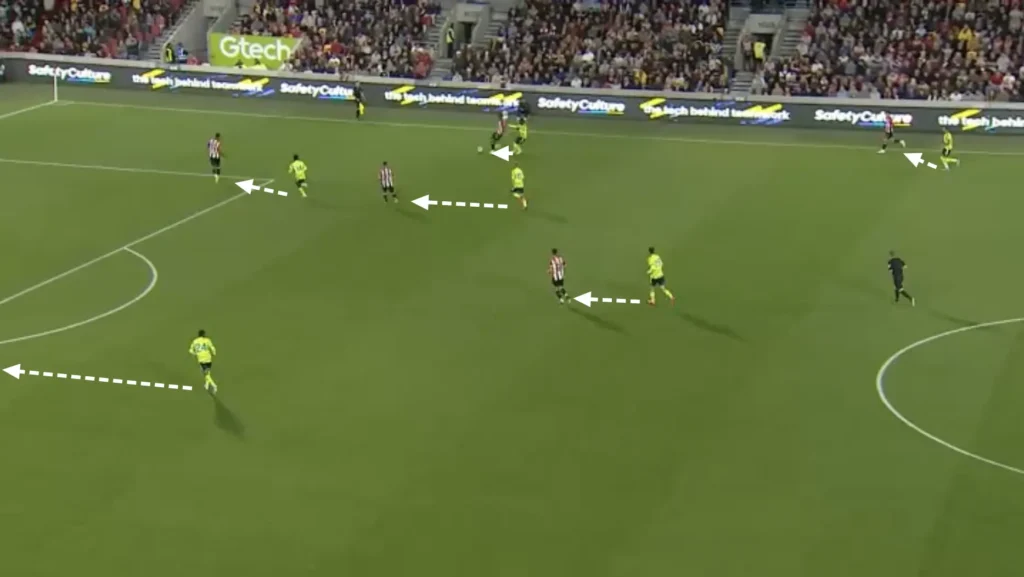
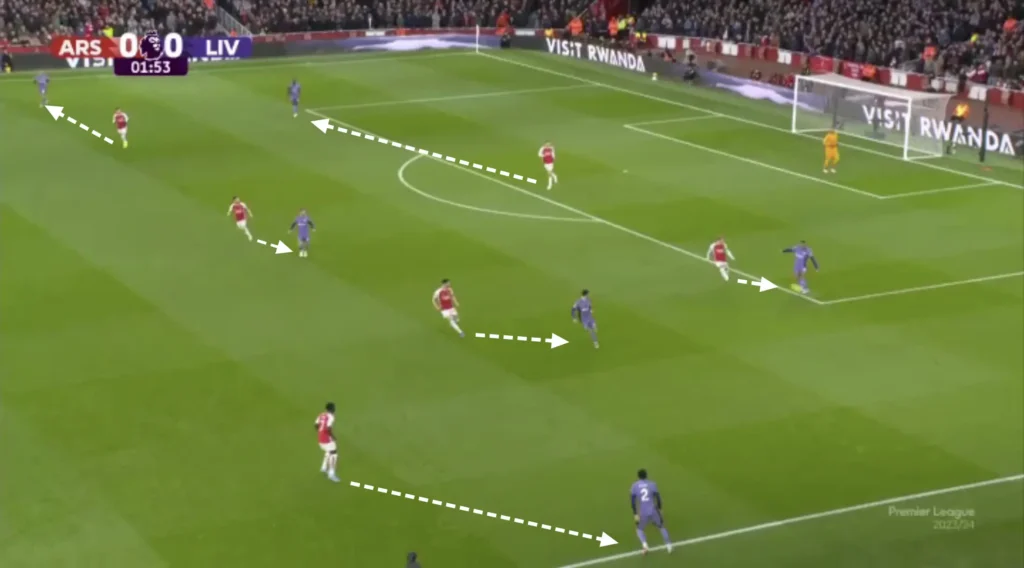
Low Press
In the low press, Arsenal set up in a 1-4-4-2 formation. They often set up in a mid-block, always trying to push up and press the opposition.
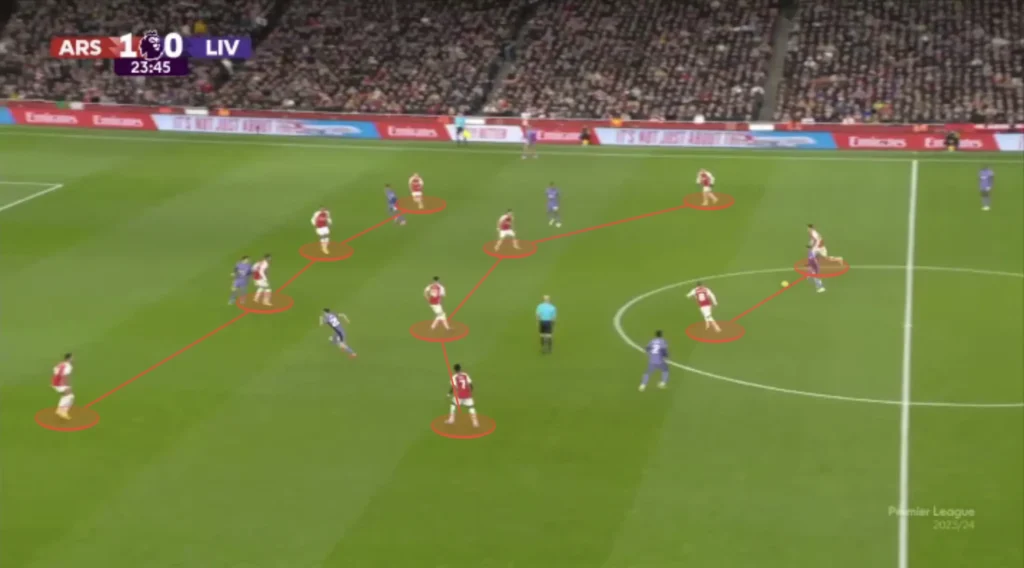
Arsenal always looks to squeeze the pitch when defending. This means constantly pushing the team up as much as possible. Every time the opponent plays a slow, sideways pass or a back pass, Arsenal’s first line of pressure pushes up, with the rest of the team following to stay compact. When the next pass comes, they push up even more, forcing the opponent back even more. They do this because it pushes the opponent further away from Arsenal’s goal, making it harder to create chances.
Transitions
Defensive Transitions
Positioning many players centrally, creating a numerical advantage in the midfield, creates good conditions in defensive transitions. Many players close to the ball after losing possession means that many players can work towards regaining possession. Arteta’s team, therefore, often regains possession directly after losing it.

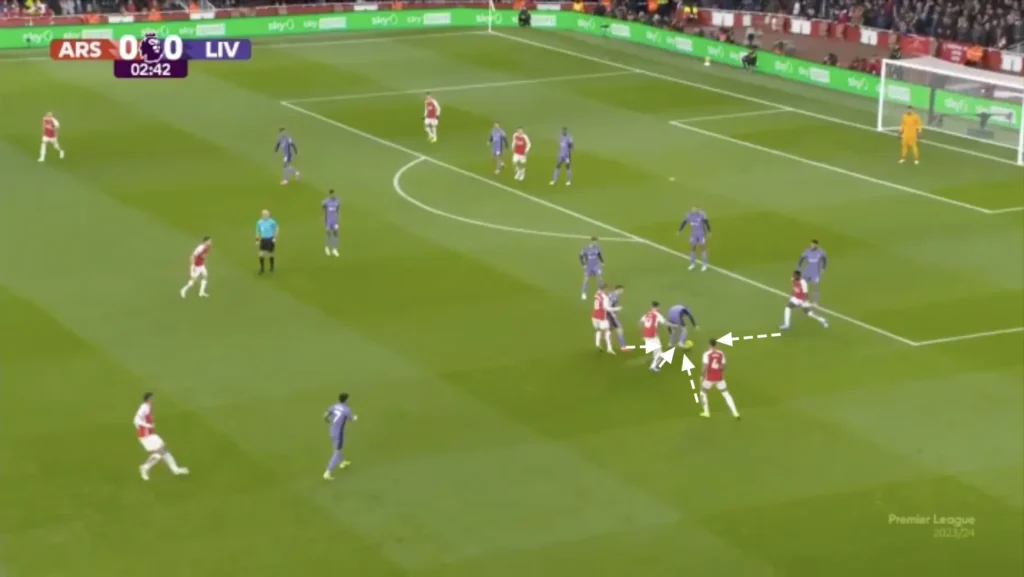
Offensive Transitions
Arteta also wants his team to counterattack in their offensive transitions. They do this with a high tempo, often attacking the spaces between the center-backs and fullbacks. Arsenal’s fast forwards have their greatest strengths in attacking the defense with speed. They, therefore, score many goals from counterattacks.
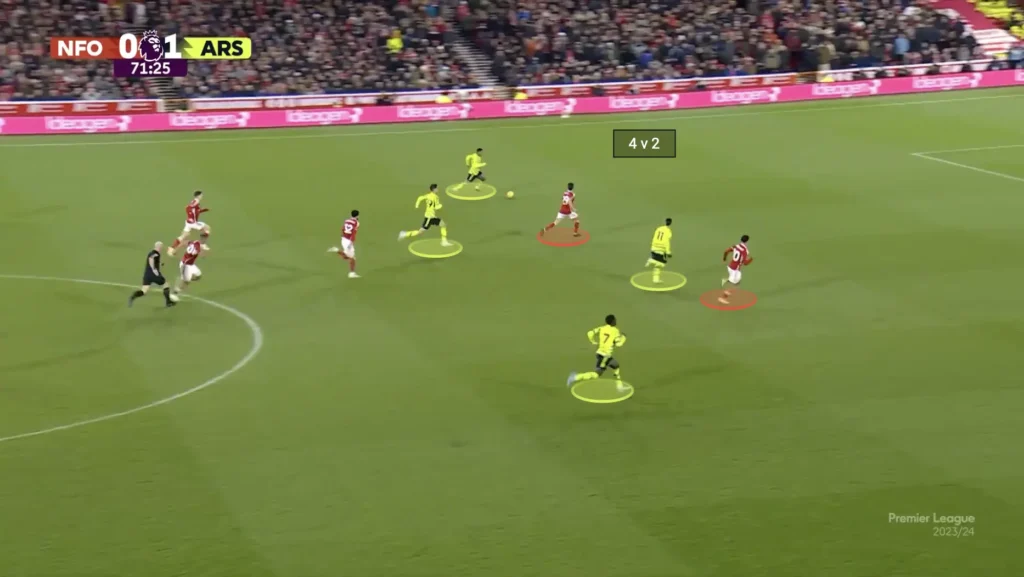
Final Thoughts
In conclusion, this tactical analysis of Arsenal under Mikel Arteta unveils a complex yet cohesive system that has undergone significant transformations. Arteta’s tactical philosophy emphasizes defensive solidity, controlled possession, and swift transitions. The strategic setup constantly evolves to suit the strengths of key players. The analysis delves into crucial aspects such as build-up strategies, defensive structures, offensive dynamics, and Arteta’s emphasis on positional play. As Arsenal continues to navigate the challenges of modern football under Arteta’s guidance, this tactical exploration provides insights into the team’s strengths, weaknesses, and the intriguing journey of transformation orchestrated by the Spanish tactician. The evolving nature of Arteta’s tactical approach keeps Arsenal’s future performances under a watchful eye, making each match a canvas where his strategic artistry unfolds.
